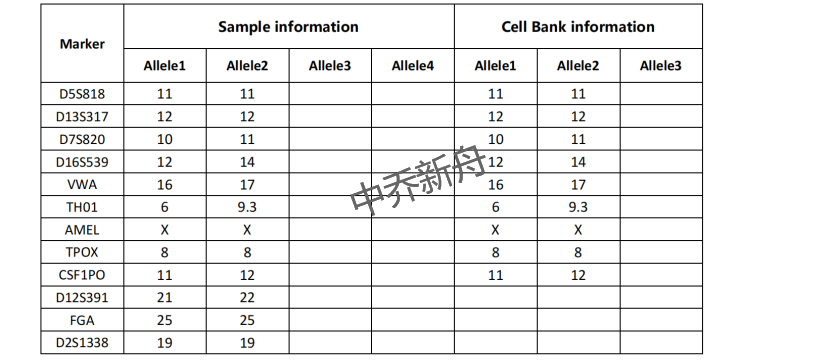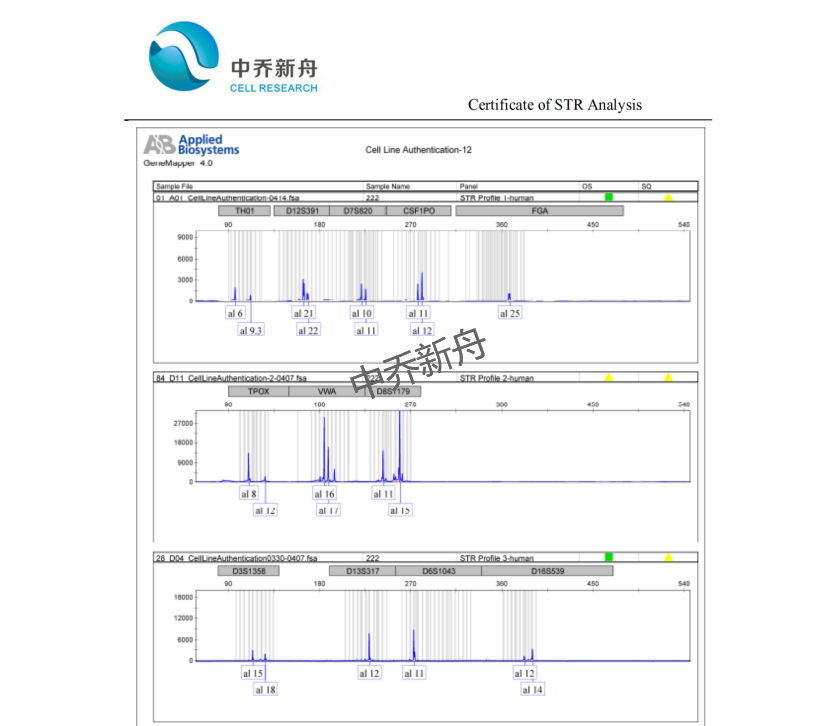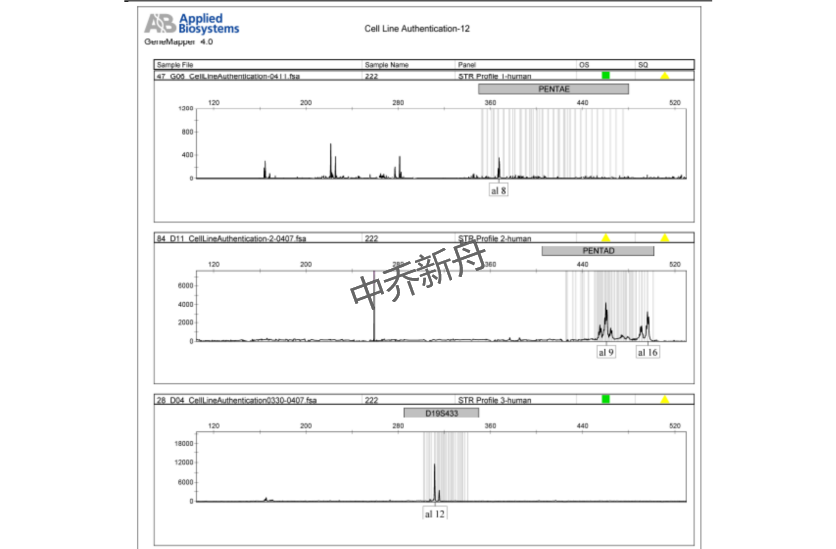|
产品名称 |
Calu-3人肺腺癌 (胸水) |
|
货号 |
ZQ0392 |
|
产品介绍 |
Calu-3细胞是一种人类上皮细胞系,来源于1975年25岁患者的肺腺癌,该患者先前接受了环磷酰胺、博莱霉素和阿霉素的治疗。该细胞表现出上皮形态,其特点是能够形成紧密连接、桥粒和微绒毛,反映了肺上皮的结构特征。Calu 3细胞以其高水平分泌粘蛋白而闻名,粘蛋白是一种参与保护和润滑肺气道的糖蛋白,使其成为研究气道上皮生物学(包括粘蛋白的产生、分泌及其调控)的相关体外模型。
注意事项: |
|
种属 |
人 |
|
性别/年龄 |
男/25岁 |
|
组织 |
肺腺癌;来源于转移部位:胸腔积液 |
|
疾病 |
腺癌 |
|
细胞类型 |
肿瘤细胞 |
|
形态学 |
上皮的 |
|
生长方式 |
贴壁 |
|
倍增时间 |
大约35~84小时 |
|
培养基和添加剂 |
MEM(含NEAA)(品牌:中乔新舟 货号:ZQ-300)+10%胎牛血清(中乔新舟 货号:ZQ0500)+1%P/S(中乔新舟 货号:CSP006) |
|
推荐完全培养基货号 |
|
|
生物安全等级 |
BSL-1 |
|
STR位点信息 |
Amelogenin: X CSF1PO: 11,12 D13S317: 12 D16S539: 12,14 D5S818: 11 D7S820: 10,11 TH01: 6,9.3 TPOX: 8 vWA: 16,17 |
|
培养条件 |
95%空气,5%二氧化碳;37℃ |
|
抗原表达/受体表达 |
*** |
|
基因表达 |
*** |
|
保藏机构 |
ATCC; HTB-55 BCRJ; 0264 |
|
供应限制 |
仅供科研使用 |
|
货号 |
ZQ0392 |
|
发货规格 |
活细胞:T25培养瓶*1瓶或者1ml 冻存管*2支(细胞量约为1x10^6 Cells/Vial)二选一 |
|
发货形式 |
活细胞:常温运输;冻存管:干冰运输 |
|
储存温度 |
活细胞:培养箱;冻存管:液氮罐 |
|
产地 |
中国 |
|
供应限制 |
仅供科研使用 |





| 货号 | 产品名称 | 规格 | 价格 | 指令 |
| ZQ505 | 支原体检测试剂盒(买二送一) | 1ml/100T | ¥800.00 | 放入购物车 》 |
| ZQ506 | 支原体清除试剂盒 | 1ml | ¥600.00 | 放入购物车 》 |
| A1001-1 | 国产转染试剂 | 1ml | ¥800.00 | 放入购物车 》 |
| 1 | 慢病毒介导基因沉默或过表达 | ¥询价 | 放入购物车 》 | |
| 5 | 荧光素酶标记 | ¥询价 | 放入购物车 》 | |
| 6 | 绿/红色荧光蛋白标记 | ¥询价 | 放入购物车 》 | |
| ZQ-300 | MEM(含有NEAA)基础培养基 | 500ml | ¥56.00 | 放入购物车 》 |
| ZQ-301 | EMEM(含有NEAA)完全培养基(10%FBS) | 500ml | ¥350.00 | 放入购物车 》 |
| ZQ500-A | 优级胎牛血清 | 500ml | ¥2580(开学促销) | 放入购物车 》 |
| 0513 | 双抗(青霉素/链霉素)溶液 | 100ml | ¥384.00 | 放入购物车 》 |
| 0563 | 支原体抑制剂 10 mg/ml; 1 ml(定制) | 10 mg/ml; 10 x 1 ml | ¥1808.00 | 放入购物车 》 |
 上海中乔新舟生物科技有限公司
上海中乔新舟生物科技有限公司